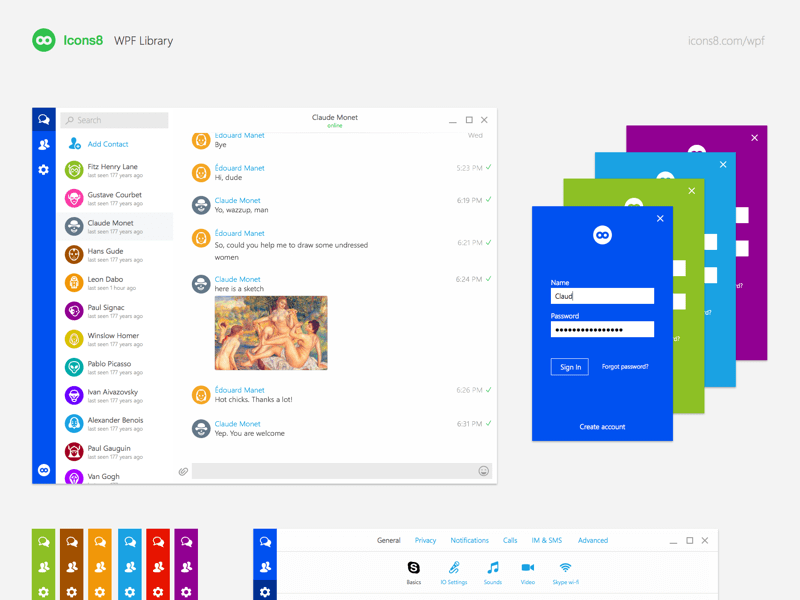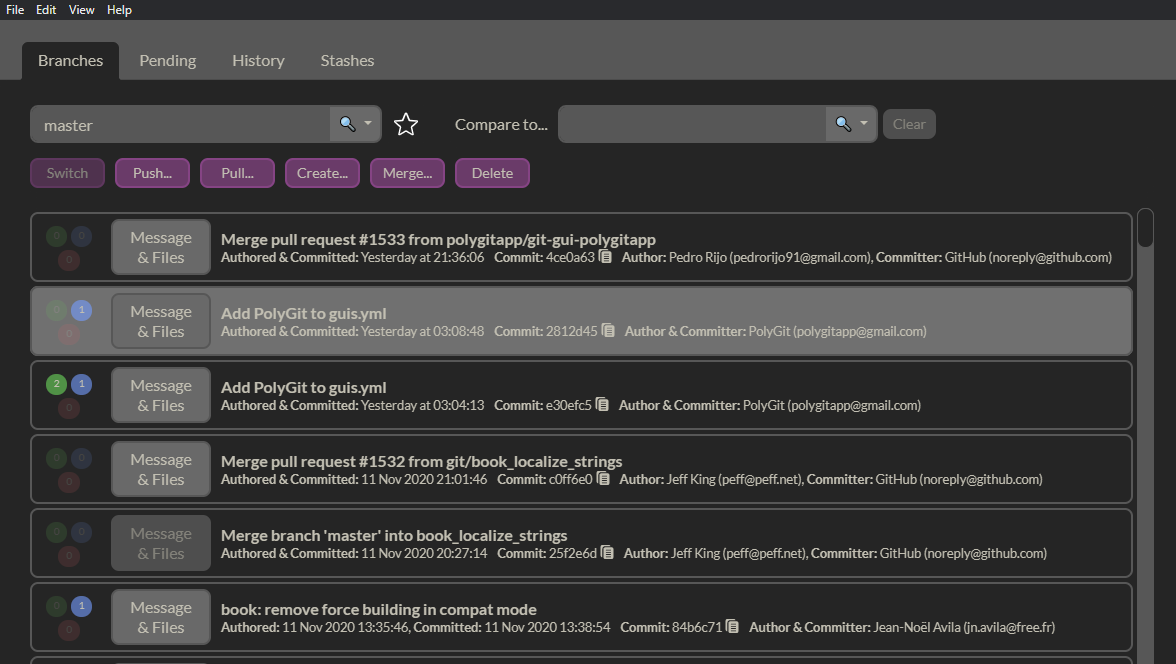
- BEST GIT GUI WINDOWS FREE INSTALL
- BEST GIT GUI WINDOWS FREE UPGRADE
- BEST GIT GUI WINDOWS FREE FULL
- BEST GIT GUI WINDOWS FREE FOR WINDOWS 10
- BEST GIT GUI WINDOWS FREE WINDOWS
You can verify this by typing git -version.
BEST GIT GUI WINDOWS FREE WINDOWS
It is important to keep in mind that while Git will work as expected in your Linux distribution, it won't be accessible on Windows Powershell or Command Prompt.
BEST GIT GUI WINDOWS FREE INSTALL
Git comes installed with most Linux distributions, but you can make sure you're using the latest stable version by running the following command: sudo apt-get install git. This should get you up and running with WSL.

To speed things up, in the "Settings" tab you can set the Windows Terminal as your default terminal and select Ubuntu (or another Linux distribution) as your default profile. Simply click the arrow to open a new tab with the desired Linux distribution and you're good to go! Windows Terminal installed The Windows Terminal supports multiple command lines (PowerShell, Command Prompt, Linux distributions) and allows you to open them in separate tabs. If you're running Windows 11, you should already have it installed.
BEST GIT GUI WINDOWS FREE FOR WINDOWS 10
It's a free download from the Microsoft Store for Windows 10 users. Personally, I prefer to use the Windows Terminal.
BEST GIT GUI WINDOWS FREE UPGRADE
You can also type that command to upgrade to WSL 2, by simply replacing 1 with 2. To change the default WSL version, run the following command: wsl -set-default-version 1 If that's the case, enabling virtualization in your BIOS or changing the default WSL version may fix your problem.


However, if you're using a Virtual Machine (or running Bootcamp on a Mac), you may run into some issues with WSL 2. This will be the one most people are looking for, so it's set as default. WSL 2 is available in Windows 10, Version 1903, Build 18362 or higher. It also uses an actual Linux kernel inside a managed VM.
BEST GIT GUI WINDOWS FREE FULL
WSL 2 increases file system performance and adds full system call compatibility. This command can also install additional distributions at any given time.Īfter the console window successfully installs the distribution, it will prompt you to enter a new UNIX username and password.Īfter providing that info, the installation process is complete! 🎉 Ubuntu successfully installed Changing the Default Version Then, it's just a matter of typing wsl -install -d to install the required distribution. If you prefer working with another Linux distribution (such as Debian or Kali), you can get the full list of options by typing wsl -list -online. Per distribution? Yes, you can install multiple Linux distributions! Read on. This may take a while, but it will only happen once. WSL successfully installedĪfter restarting your Windows machine, a new console window will open to complete the installation.

This simple command will install everything you need: it will enable the required optional components, download the latest Linux kernel, set WSL 2 as your default version, and install a Linux distribution (which, by default, is Ubuntu). Now, type the following command: wsl -install Running Windows Powershell as Administrator Once you confirm your machine is eligible, you will need to run Windows Powershell or Command Prompt as an administrator (by right-clicking or selecting the desired option on the right). It's very likely that you are already running a compatible version, but you can quickly confirm this by pressing ⊞ + R and typing "winver". In order to install it, you will need to be running Windows 10 version 2004 and higher (Build 19041 and higher) or Windows 11. Here's everything we will cover in this article: Then, we will also configure Git for version control. The best part? You can install WSL on most Windows machines and the entire process shouldn't take more than five minutes. Programmers that enjoy working on Windows can now run a GNU/Linux environment in all its glory (including common CLI tools and frameworks like Ruby or Python) without the performance hit of installing full-blown virtual machines or the hassle of running a dual-boot setup. The Windows Subsystem for Linux brought the best of both worlds to developers.


 0 kommentar(er)
0 kommentar(er)
